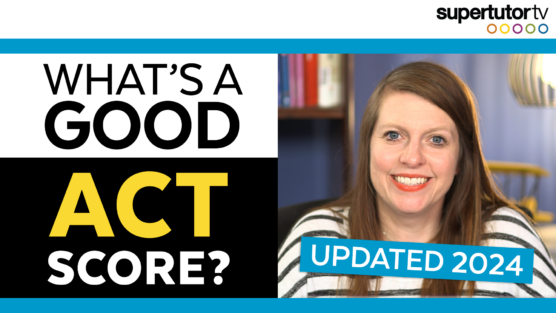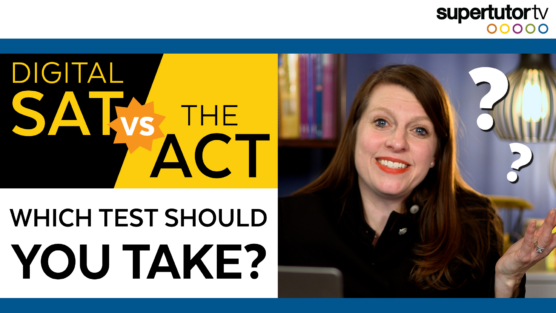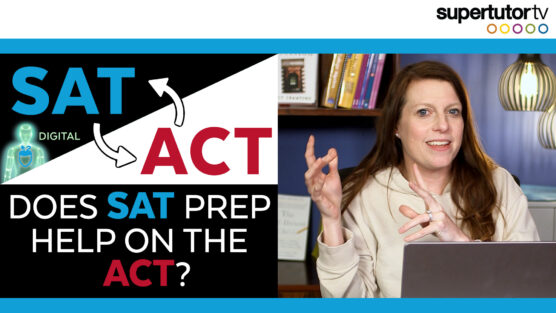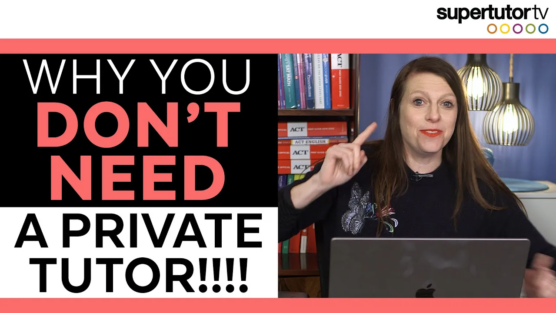You might be asking yourself “How can I write a better ACT essay? How can I get that elusive 12 score?” In this post, I’ll share some tips and strategies of what to do and what not to do to amp up your ACT score.
Want the quality of private ACT prep tutoring at a fraction of the cost? Check out our online course: Video Explanations: The Official ACT Prep Guide 2016-2017 Over 30 hours of video test prep, based on official materials, taught by a perfect scoring tutor!
Before we dive into the do’s and don’ts, let’s take a look at a sample prompt that I’ll refer to throughout this blog post.
Social Media
Much of the information and news we read daily comes from our social media feed rather than television or print media. We read “headlines” from our friend’s latest accomplishments, look at articles posted by people we know, and watch silly cat videos liked by our relatives. Many of our social interactions are also mediated through these platforms, as we comment on other people’s personal troubles, trade political ideas in response to articles, and tag each other in photographs. Unlike newspapers or television, social media allows for interactivity, a benefit generally seen as a sign of progress, but does our culture’s move to social media also have drawbacks? Given the accelerating variety and prevalence of social media, it is worth examining the implications and meaning of its presence in our lives.
And now the three perspectives:
Perspective One
When communicating online, we lose an important sense of connection with each other, as our interactions become more superficial. The result is often an oversimplification of issues and a decrease in interpersonal connections.
Perspective Two
Social media allows for a more democratic world. When people can like and share content and opinions, they speak to others in a way that has a far more profound effect than impersonal media, inspiring a greater level of tolerance and equality in our society.
Perspective Three
Social media challenges our assumptions about what human relationships are or can be. This is good because it pushes humans toward new ways of interacting that deepen our human experience.
ACT Essay Don’t #1:
Don’t Repeat Ideas Rather Than Develop Them
One of the most common habits I’ve seen in students’ writing is that they don’t develop their own ideas, but instead just repeat ideas. Some students even repeat one of the perspectives word for word, only to then rephrase it multiple times to constitute an entire paragraph.
Of course you do want to restate the perspective in some way. But the key is to be original, be true to your own voice, and not just parrot what’s written on the test. Taking the perspective text 100% and dumping it into your essay, and then explaining it in other words over and over is not going to help you achieve a top score.
Not only do you need to put the perspective into your own words, but you also need to develop the idea– that means much more than just explaining a point of view.
Here’s an example:
When communicating online, we lose an important sense of connection with each other, as our interactions become more superficial. The result is often an oversimplification of issues and a decrease in interpersonal connections. Posting on social media leads to fewer friendships. Everything is just on the surface and not as deep as real friendship— it’s just posting on the internet. We don’t feel connected when we post online.
See what I’ve done here? I literally repeated the first two lines of Perspective One, then continued the conversation on my own by trying to explain what that idea means, but not actually adding much to the meaning. I didn’t deepen my argument.
Development requires more than repeating ideas or explaining them– it involves using evidence or additional logical reasoning and argument to make your point. Without something to substantiate your claims, your work may feel thinly supported and redundant.
ACT Essay Don’t #2:
Don’t Agree With Everyone
What I mean by “everyone” is perspectives one, two and three. Now, part of this issue originated with the original version of this prompt– before 2016, the prompt actually asked you to specifically respond to perspectives 1, 2 and 3 (all of them!). Many prep books on the market subsequently told (and many still tell!!) students that the best way to approach the structure of the essay is to start with an introduction, then three body paragraphs– each focused on one of the perspectives (i.e. paragraph one, perspectives one, etc.) and then write a conclusion.
ACT realized the grave problem with such a prompt — and the structure it inspired. Too many students were trying so hard to talk about everything, it was hard to even see a cohesive perspective. In September 2016, the ACT revised the prompt– now you are only required to respond to at least one other perspective — not all of them!
Still, some students, and some prep books, haven’t taken note, and are still trying to cover every perspective possible to ill effect.
The worst case scenario occurs when students use that “default” structure all those not so updated prep books preach and then just agree with all three perspectives. In the end, I have no idea what position they are taking on the subject.
Take for example our sample prompt– if I say “Social media leads to oversimplification of issues. The result is often an oversimplification of issues and a decrease in interpersonal connections.” in my paragraph 1 and then, “Social media allows for a more democratic world.” in paragraph 2 it’s unclear whether I think that social media has positive or negative effects, or how these two ideas work together at all.
Your job is not to look at one perspective and say “I like that, that’s true!” and then look at another and say “oh, I like that one too!” You have to build a response that’s cohesive to the entire essay. It needs to be ONE point of view, not three points of view. And even if you do agree with more than one perspective, you still have to craft one cohesive point of view that makes logical sense how you’re agreeing with both. In summation, your entire essay needs to take one hard stance instead of three, even if it’s a combination of two or more ideas. Don’t have three different voices, or three opinions, in the body of your essay.
ACT Essay Do #1:
Propose a Clear, Original Argument
This “do” kind of riffs off of the last “don’t” in that you want to figure out exactly what your take on this issue is. This also goes back to the point of originality. The ACT essay is about YOU. What is YOUR point of view, personally? Don’t worry about what you think the ACT graders will want to read. Be true to your own voice, your own stance on the issue.
Can you just agree with one perspective and develop it? Yes– but arguably the example essays I’ve seen that have gleaned a 12 are not identical in argument to any of the perspectives. All have some personal angle, take or additional interpretation to them — some qualification or specification or something that makes them a bit more original. Can you get a 10 with a well developed essay simply based on one perspective given– probably.
Your argument may be kind of like one of the perspectives in many ways, but you will add to it, in your own voice. Or, it could be a good combination of two of the perspectives into one logical argument like we talked about before. Or, you could even take a whole different perspective that is a rebuttal to all three given perspectives. Whatever the case may be, present a point of view that you believe in, that you can back up, something that will make people nod along and say “that makes sense.” If you’re not buying it, no one else is going to buy it either.
So here’s my point of view regarding our sample prompt:
Social media may impact our ability to form personal relationships for the better, but it also leads to ideological polarization. As we reinforce ideas shared by “our” group, oftentimes supported by short headlines and superficial postings, we isolate ourselves from engaging in deeper conversations with those who are not like us.
As you can see, I don’t wholly agree with any of the perspectives. I agree with some of Perspective One: the idea that our interactions become more superficial, and the idea of oversimplification of issues. But I don’t agree with the decrease in interpersonal connections. Instead, I just say that the nature of those connections is polarized. When I frame my argument, I can even point out that difference, starting off by introducing perspective 1’s opinion with language such as (while some believe that….) and then agreeing with half and disagreeing with the other half of the perspective. I also disagree with much of perspective two: this isn’t simply growing “tolerance” of others– in fact, it may be doing the opposite– growing factions. Just because I don’t latch on to perspectives doesn’t mean they have no place in my discussion– they do.
In any case, the objective is to find a thesis that is cohesive, insightful, and something that can sustain an entire essay.
ACT Essay Do #2:
Start With Concrete Examples, Then Analyze
Many of my students will come up with their thesis or their analysis, then come up with concrete examples, and try to force them both together to make the examples fit the analysis. This can lead to disjointed seeming essay.
So how do you build a strong relationship between your example and analysis?
Rather than start with the thesis and then shovel some ideas underneath it, write your paper from the INSIDE OUT!
START with your concrete example, then derive your analysis from there. Begin with the example then work your way out from there, making your analysis that much more clear and connected. When you actually analyze the example and try to see a path of analysis that makes sense from there, you’ll have better, connected ideas.
Ah, but where do you find these concrete details? If you have trouble coming up with your own, you will usually find some in the prompt. And you’ll want to be as specific as possible. Let’s go back to our sample prompt and find one to work with:
“look at articles posted by people we know”
So this is what I want to focus on first, because I’m talking about political clustering in social media in my thesis statement. I’ll deepen this by making it more specific:
- Many people post articles about equality
- article about how the US is in the bottom tier of 1st world countries in equality
- this fosters a concern for equality in me
- makes me think of ways I can help reduce inequality
- then I post another post about inequality which reinforces this as a value
- I start to value “equality” but may reject the ideas of those who do not
What I’m doing here is drilling down to all the specific ways that articles by people I know affect me, then I’m going to parse that out into full sentences to get my point across. The bottom line here, though, is I started with the concrete detail first then started to analyze it. Once I’ve analyzed, then I piece it all together and come up with my logic. This will create more cohesion between my example and the point I’m trying to prove than trying to slap things together with a band-aid would.
Conclusion
Hope you enjoyed these tips!
If you’re looking for more on the essay, check out our blog on how to write a full ACT essay here: How To Write The NEW ACT Essay
AND check out our TOTALLY FREE ACT essay prompts here to get your practice on: FREE New Act Essay Sample Prompts




